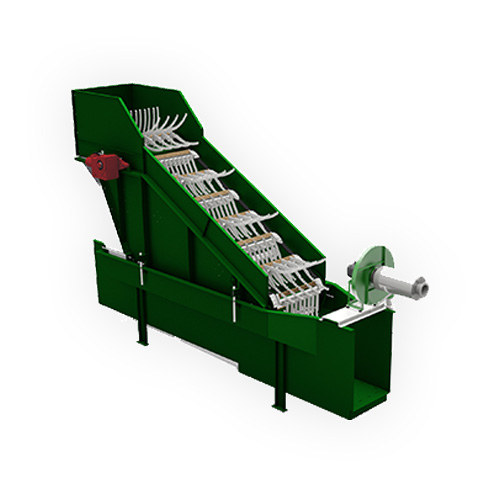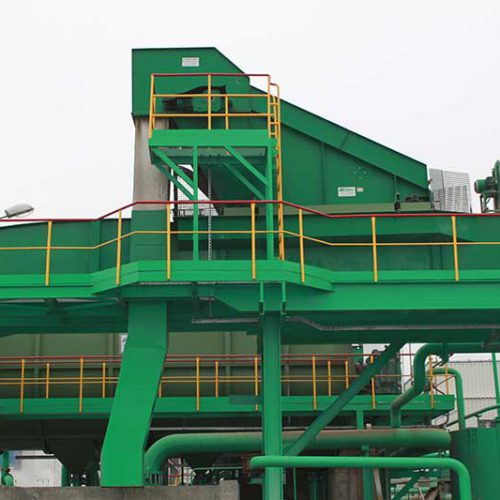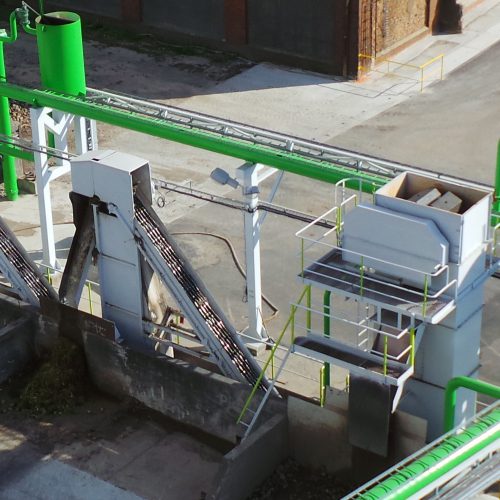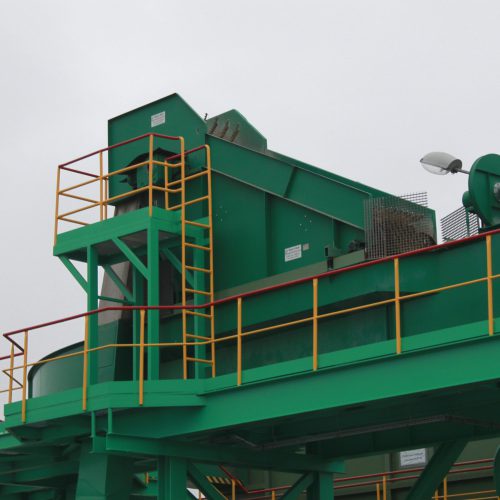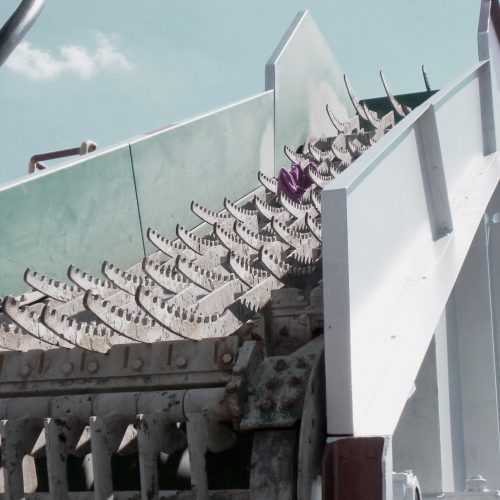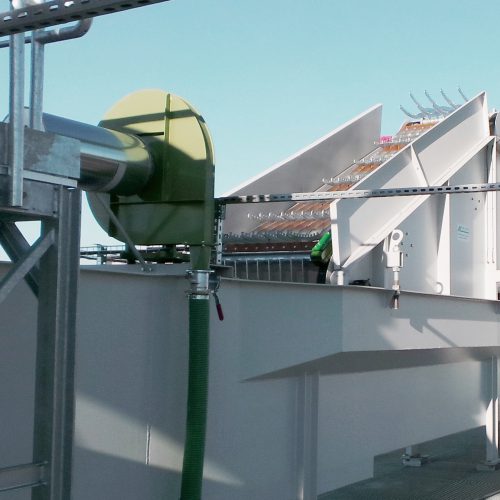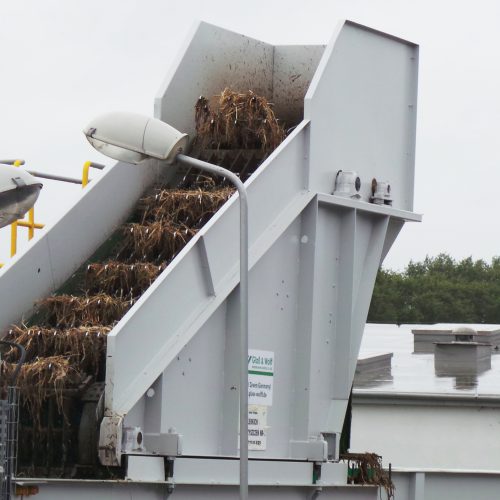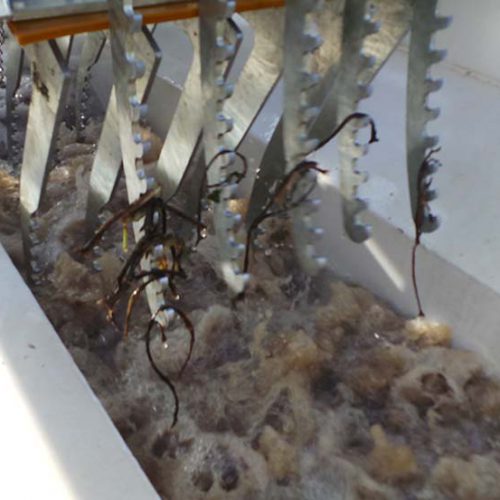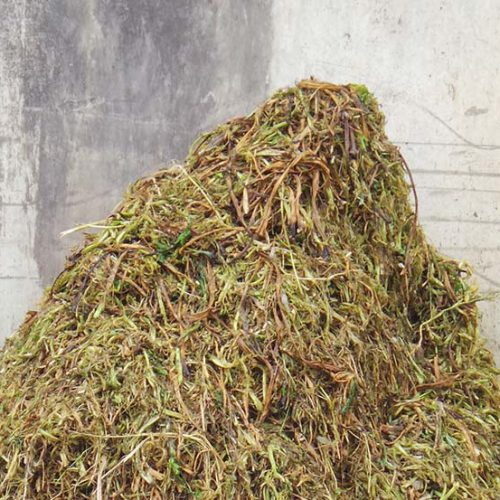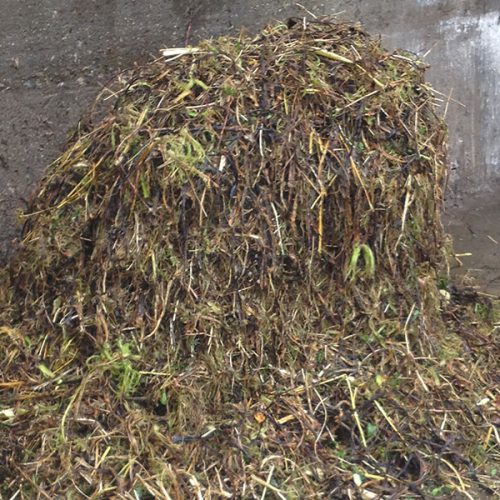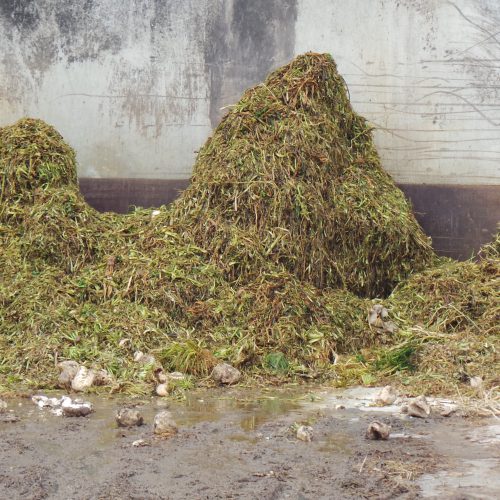Belt type weed catcher
The Glaß & Wolff belt type weed catcher is used for separating long-fibred particles from the wash stream.
Special features of the Glaß & Wolff belt type weed catcher:
- Two steel-reinforced rubber belts, used to hold the toothed crossbeams.
- The steel-reinforced rubber belts remain maintenance-free for years and have anextremely high tensile strength
- Because of the guided belt plates, the belt cannot become misdirected
- Tooth reception
- Fruits that are carried with the collecting arm fall through the collecting arm gap in theupper tower and back into the wash
Each collecting arm is welded to a socket. The connection is made via a pressed-in, highly wear resistant plastic bushing. The receiving shaft of the collecting arm is screwed onto the traverse using a simple clamping device. The groups of teeth, which differ in number based on the width of the collecting arm, are easy to disassemble and alter. Unlike in fully belt- based weed catchers, the collecting arm gap is empty.
A special accelerator for the collecting arm is installed at the delivery point for the leaf chute. The collecting arms are accelerated over “noses” at the pivot point and abruptly decelerated against a pivot mounted rubber roller. Because of the sudden braking, the foliage is properly knocked off of the capture arm. The foliage is discharged for further use via a leaf chute made from stainless steel.
Our machines are provided with a special flume element designed to accommodate belt belt type weed catcher. In the inlet area, the flume element is equipped with a pneumatic leaf lifter, screw-mounted onto the base plate. The pneumatic leaf lifter is supplied by a powerful fan, which is positioned above the flume on a welded console, supplied with compressed air through a pipe connection. In the base plate, an air receiver is welded under the rim. The base plate is provided with ventilation holes. The air escapes through the ventilation holes in the base plate and drives the long-fibred foliage along the surface of the beet-water current. The effectiveness of the belt type weed catcher is thereby further improved.

